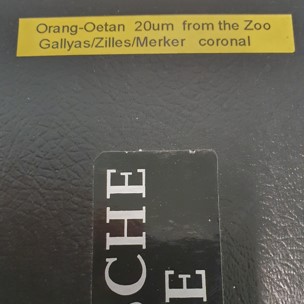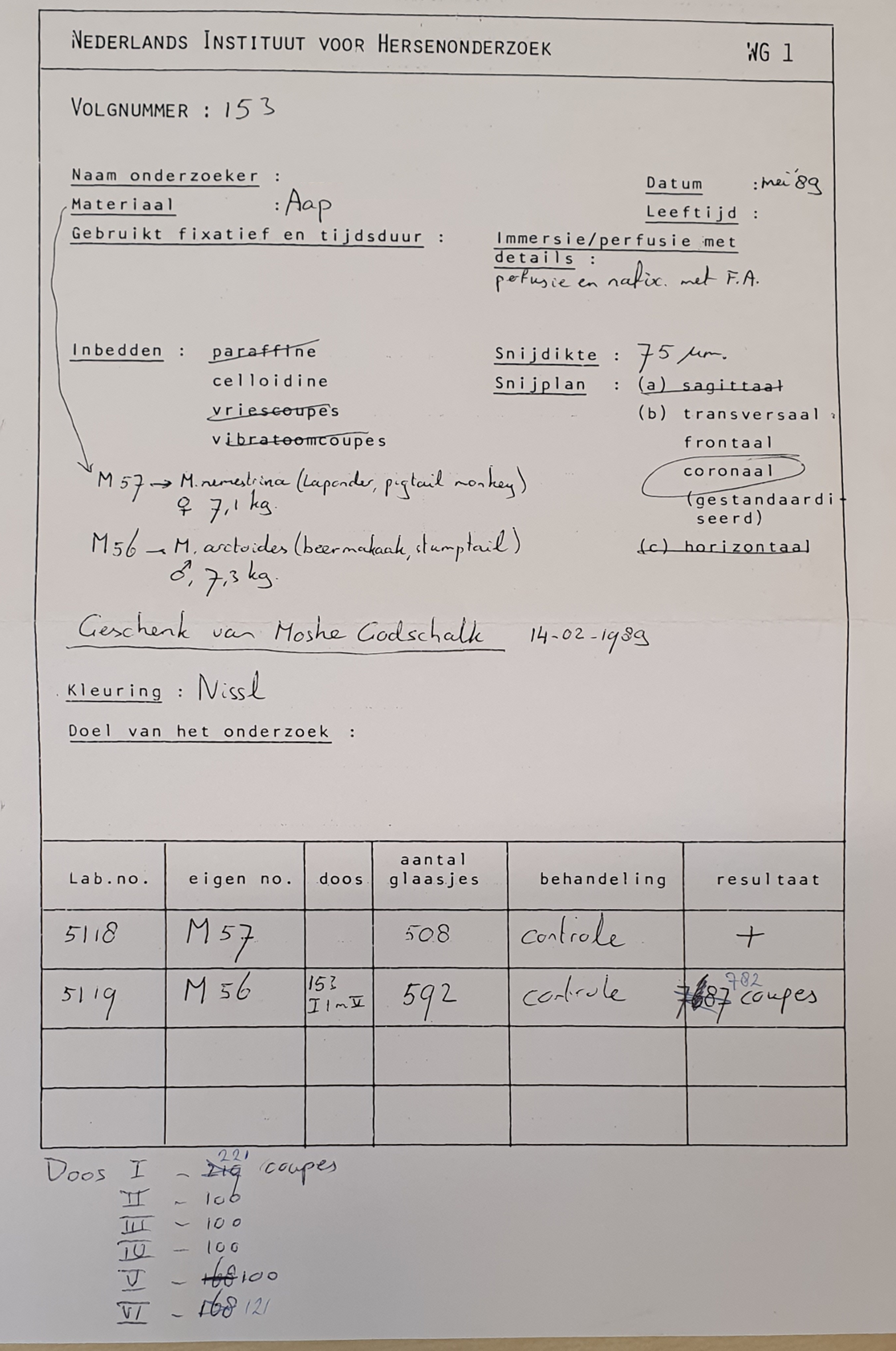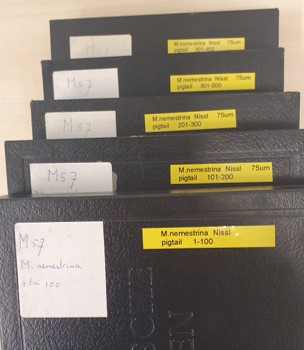De herkomst van de breinen pagina
In this site we feature several original brains of animals. Either, presented as freshly harvested, processed and sliced, stained and mounted om glass slides. We find it important to explain where these brains originate from. So therefore, on this page the way we acquired the brains can be found.
Please note: Effort has been made to reference the origin of all material. If in any case this is not found complete or adequate, please use the contact form and update us!
De samenwerking met Dierenopvang Flappus in Zwolle, Nederlamd
Dierenopvang Flappus zorgt voor dieren die zorg nodig hebben. Gepassioneerde en gespecialiseerde staf en vrijwilligers zorgen voor zwerfdieren en gedumpte dieren en probeert deze weer onder te brengen bij nieuwe baasjes. Ook behandelen ze wilde dieren die voor wat voor reden dan ook zorg nodig hebben na binnengebracht te zijn door bezorgde mensen. Dieren die gewond zijn gevonden of slachtoffer zijn van verkeersongelukken. Alhoewel alle binnengebrachte dieren de beste zorg krijgen komt het voor dat ze het niet redden en overlijden.
Deze overleden dieren worden gedoneerd aan ons project: Brainsofthisworld.org. Nadat de dood is ongetreden worden ze gedocumenteerd en ingevroren. Elke twee weken wordt de vriezer door ons geleegd en de overleden dieren vervoert naar Science Park, Universiteit van Amsterdam. De breinen worden onder gecontroleerde omstandigheden uit de schedel gehaald en verder verwerkt.
De samenwerking met Reptielenopvang in Zwanenburg, Nederland
Reptielenopvang Zwanenburg is gespecialiseerd in de opvang van reptielen. Gepassioneerde en gespecialiseerde staf en vrijwilligers zorgen voor de dieren die voor wat voor reden dan ook zijn aangeleverd. Alhoewel alle binnengebrachte dieren de beste zorg krijgen komt het voor dat ze het niet redden en overlijden.
Meerdere overleden dieren zijn gedoneerd aan ons project: Brainsofthisworld.nl. Na te zijn overleden, zijn ze gedocomenteerd en ingevroren. Ze zijn door ons opgehaald en vervoert naar Science Park, Universiteit van Amsterdam. De breinen worden onder gecontroleerde omstandigheden uit de schedel gehaald en verder verwerkt.
The Fish brain
Lots of the brains were acquired form fresh fish and fish heads donated by our fresh fish monger, Vossole in Zeist, the Netherlands. Of course we needed the freshest fish to produce the freshest brains and Vossole was willing to provide us with various species that are in the diet of the Dutch population. Such as: Sea bass, Salmon, Sea Bream (Dorade) and Mackerel.
Also Vossole invests in anatomy projects by collecting, storing and distributing fish species that are considered 'by-catch' and would be otherwise thrown overboard. One of these species is the small spotted catshark (Scyliorhinus canicula), which happens to be called 'hondshaai' (meaning dog shark) in Dutch.
The brains of all these fish were collected and processed and made available as study material for neuroscience students and neuroscientists.
The Orangutan brain
Here a picture

The Orangutan brain was a gift from the research facility of the Boston ZOO to the Anatomy department of the VU. It remained in the storage of the neuroanatomy department at the VUmc untill early 2024, when it is made available as study material for neuroscience students and neuroscientists alike.
The Macaca Nemastrina brain


In the seventies and the eighties of the previous century, neuroscience research on monkeys was considered key in understanding neuroanatomy and functions of human brains. Essential to understanding the results was to collect the brain afterwards and make it available for neuroanatomical evaluation. The brain of this particular monkey was collected in ..... and processed in 1983. It remained in the storage of the neuroanatomy department at the VUmc untill early 2024. Now it has been made available as study material for neuroscience students and neuroscientists.
The Marmoset brain
Here the box
In the seventies and the eighties of the previous century, neuroscience research on monkeys was considered key in understanding neuroanatomy and functions of human brains. Essential to understanding the results was to collect the brain afterwards and make it available for neuroanatomical evaluation. The brain of this particular monkey was collected and processed in 1983. It remained in the storage of the neuroanatomy department at the VUmc untill early 2024. Now it has been made available as study material for neuroscience students and neuroscientists.
The dog brain
Here a picture
Here the box
In the previous century, neuroscience research on dogs was considered key in understanding neuroanatomy and functions of human brains. Essential to understanding the results was to collect the brain afterwards and make it available for neuroanatomical evaluation. The brain of this particular dog was collected during a neuroanatomy practical in 1987 where Beagles used in research were made available for students to examine. Tonny Mulder acquired the brain which was then placed in a jar containing fixative and has been stored in his basement for at least 30 years. For this neuroanatomy project, the brain was taken out and processed and made available as study material for neuroscience students and neuroscientists.
The cat brain
Here a picture
Here the box
In the seventies and the eighties of the previous century, neuroscience research on cats was considered key in understanding neuroanatomy and functions of human brains. Essential to understanding the results was to collect the brain afterwards and make it available for neuroanatomical evaluation. The brain of this particular cat was collected in ..... and processd in ..... It remained in the storage of the neuroanatomy department at the VUmc untill early 2024. Now it has been made available as study material for neuroscience students and neuroscientists.
The Snake brain
Here a picture
The brain of the Royal Python (python regius) was acquired from a specimen that lived in a terrarium for many years where it died of natural causes. It was then placed in fixative for years and was about to be discarded of. Tonny Mulder took over the jar which has been stored in his basement for at least 20 years. For this neuroanatomy project, the brain was taken out and processed and made available as study material for neuroscience students and neuroscientists.
Hinke Boer, Fons Brauers, Andy Louter, Lindsey Pennaertz, Aisha Raja and Tonny Mulder - University of Amsterdam